Paris Hilton Shares Sweet Family Photos, but People Spot a Curious Detail

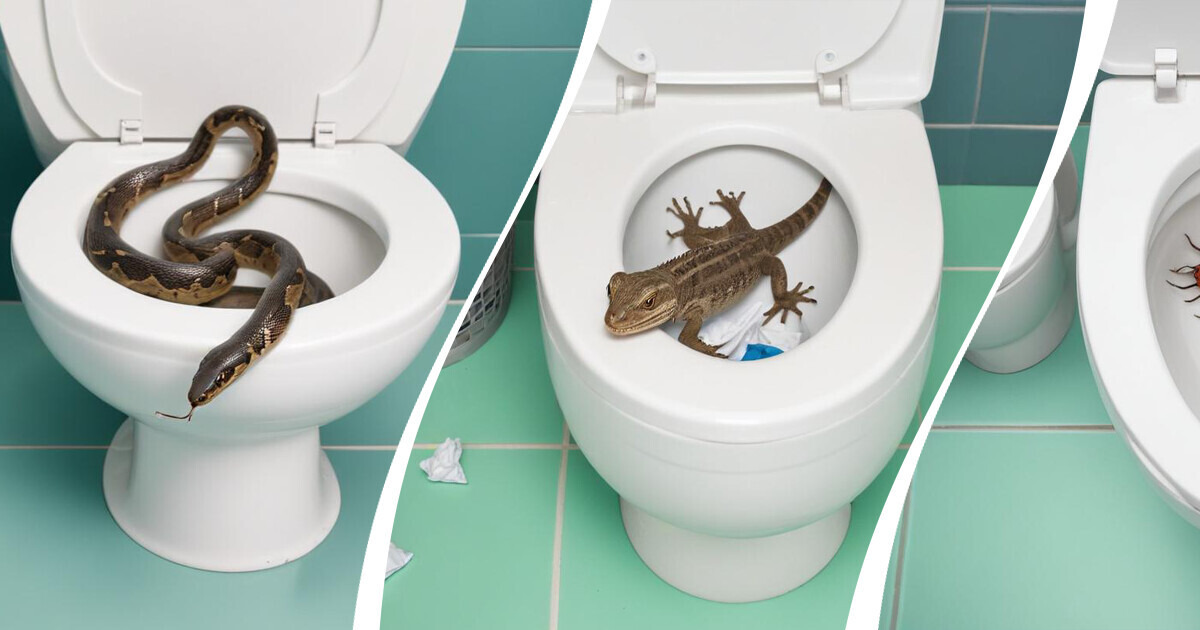
Unwanted pests are always lurking outside, just waiting for the right moment to invade your home. Whether it’s tiny ants or even larger creatures like snakes, they constantly seek opportunities to slip inside when you least expect it. Often, it only takes the smallest crack or gap in your home’s structure for these intruders to find their way in. This is why ensuring your home is well-sealed and fully protected is crucial in keeping these pests at bay. Regularly inspecting and reinforcing your home’s defenses can make all the difference in preventing these unwelcome guests from making themselves at home.
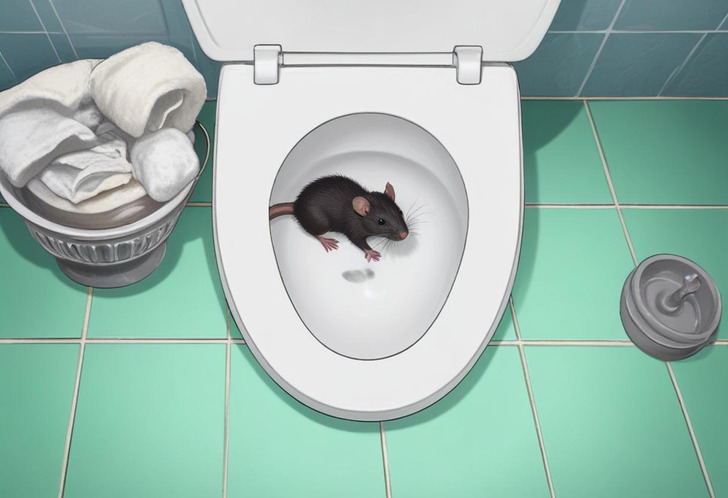
The first sign that mice or rats have infiltrated your walls often comes as subtle noises or the pitter-patter of tiny footsteps in the dead of night. These nocturnal rodents are notorious for gnawing on electrical cords and insulation, which is another clear sign of their presence. Additionally, discovering chewed food packages or rodent droppings scattered around your home serves as a strong indicator that these unwelcome guests have moved in. Mice, in particular, are highly adept at navigating your home, and spotting even a single dropping usually means there are many more lurking nearby.
What to do: Start by thoroughly inspecting your home’s exterior for any holes or cracks and seal them immediately. If you have ivy or climbing plants on your walls, consider removing them, as rodents can use them as a natural ladder to access your home. Maintaining cleanliness is crucial—ensure that your home is free of clutter and that all trash is properly disposed of. The scent of garbage and unclean environments are powerful attractants for mice and rats, so keeping your living space tidy is one of the best ways to prevent an infestation.
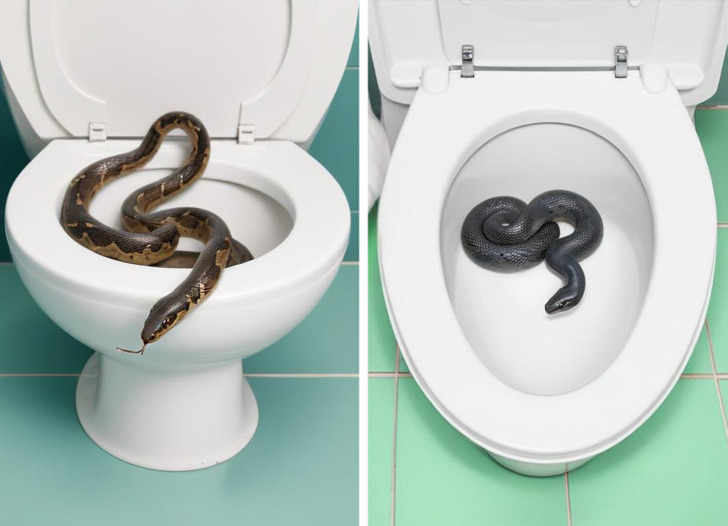
Snakes are naturally attracted to environments that are cool, damp, and dark, making toilet pipes an appealing destination for them. Their journey often begins in the sewer, where the presence of food remnants lures them in for a meal. Once they’ve had their fill, they instinctively seek an exit, and toilet pipes offer a convenient and direct escape route. Fortunately, if you reside in a colder climate, this is less of a concern, as snakes are more commonly found in toilets in warmer regions.
Typically, the snakes that find their way through these pipes are harmless species, such as garden or tree snakes. These snakes are generally slimmer, which allows them to navigate the narrow confines of plumbing systems more easily than their venomous counterparts. However, there have been rare but alarming reports of much larger snakes, like anacondas, making unexpected appearances in toilets, particularly in South America and Australia.
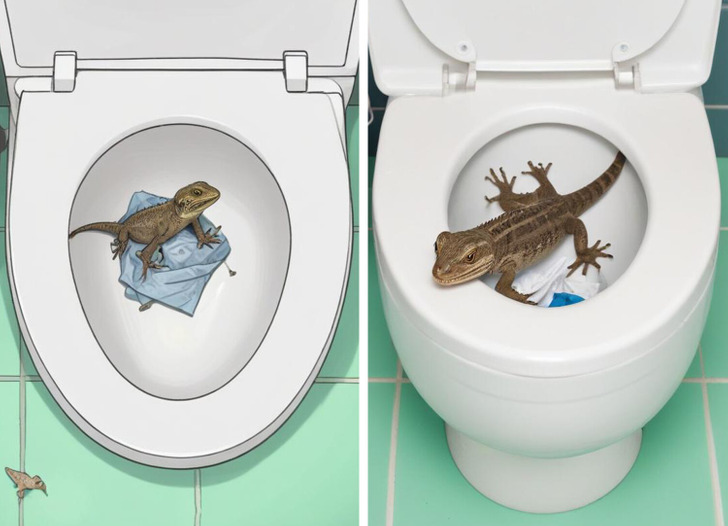
In the Southwest United States, it’s not unusual to encounter lizards making their way through toilet pipes. These reptiles are attracted to water sources and will go to great lengths to find food wherever it’s available. If your plumbing isn’t regularly maintained and cleaned, crickets, flies, and other insects can accumulate within the system, creating an enticing buffet for these lizards. The lizards that manage to squeeze through the pipes are typically small, making it easy for them to navigate the narrow spaces within the plumbing. Regular cleaning and maintenance of your plumbing system can help minimize the likelihood of these unexpected visitors.
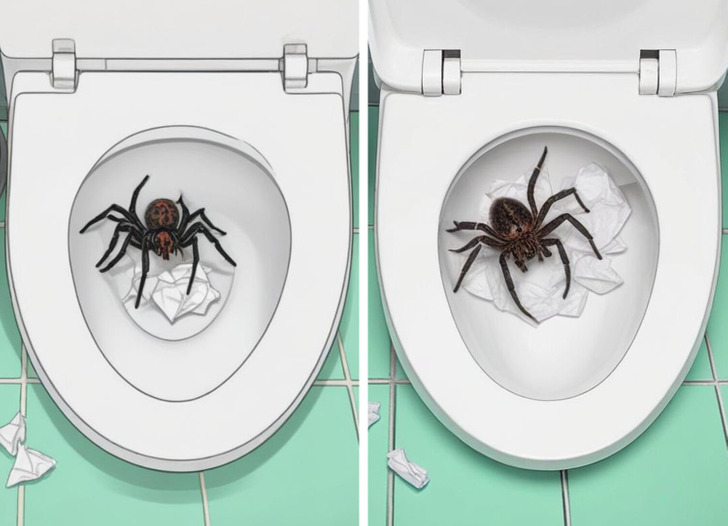
Dealing with spiders in your bathroom can be a bit more complicated. Unlike some other pests, spiders can’t swim through your pipes, but they can still find their way into your bathroom through small gaps and cracks. Once inside, they may settle outside the toilet seat, waiting for prey. However, it’s important to note that only black widows have been known to actually crawl inside toilets and spin webs across the seat.
This behavior is most commonly observed in outdoor toilets that lack plumbing or sewer connections. In these environments, venomous spiders like black widows thrive due to the plentiful supply of flies for food. For this reason, it’s crucial to inspect the toilet seat carefully before using an outhouse or outdoor toilet. Venomous spiders, including the black widow, brown recluse, and hobo spider, can bite with ease if disturbed, making it essential to exercise caution.
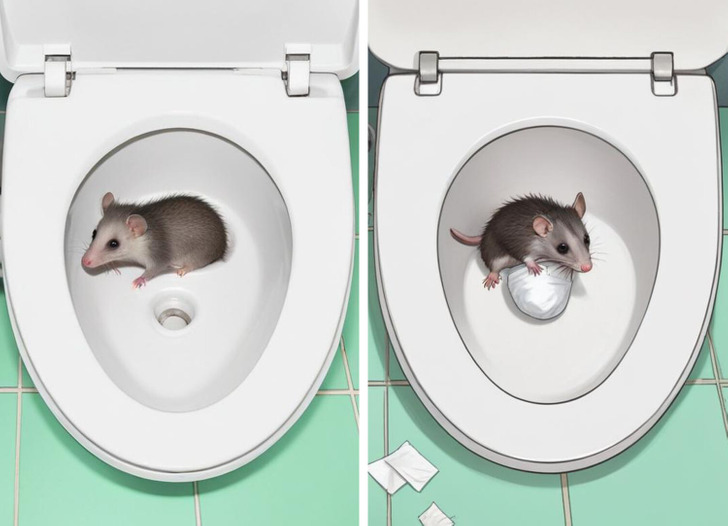
Opossums are skilled climbers, making it easy for them to gain entry into homes by accessing roofs or other elevated entry points. This is why it’s crucial to regularly inspect the exterior of your home, paying close attention to areas like the roof where they might find a way in. Opossums are also known for their loud vocalizations, including hissing and shrieking, which can make their presence unmistakable. If they become trapped inside your home, they may scratch at walls in a desperate attempt to escape. Once outside, they often go after your pet’s food, and the foul odor of their feces can quickly alert you to an infestation.
To prevent opossums from entering your home, start by conducting regular inspections to identify and seal any gaps or holes that could serve as entry points. Ensure that vents and other openings are securely covered with mesh to keep these creatures out. If, despite your best efforts, opossums still manage to infiltrate your home, it’s advisable to contact professionals who can safely and effectively remove them, minimizing the risk of harm to both you and the animals.
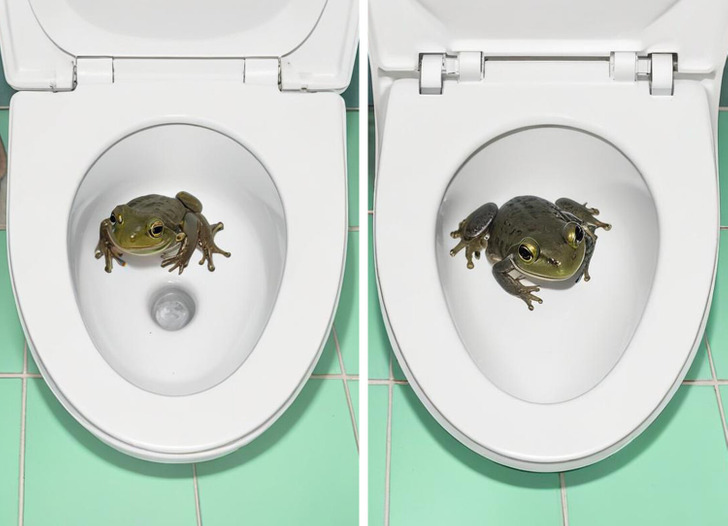
These slippery little creatures can also find their way into your bathroom uninvited. In 2020, the UK experienced a surprising phenomenon—a mass invasion of frogs in toilets, which was linked to frogspawn being laid in the sewage system. Beyond this unusual event, frogs are also known to enter homes through vent pipes, making their way inside through unexpected routes. While finding a frog in your bathroom can be startling, it’s a reminder of the various ways wildlife can intrude into our living spaces, often through openings we might overlook.
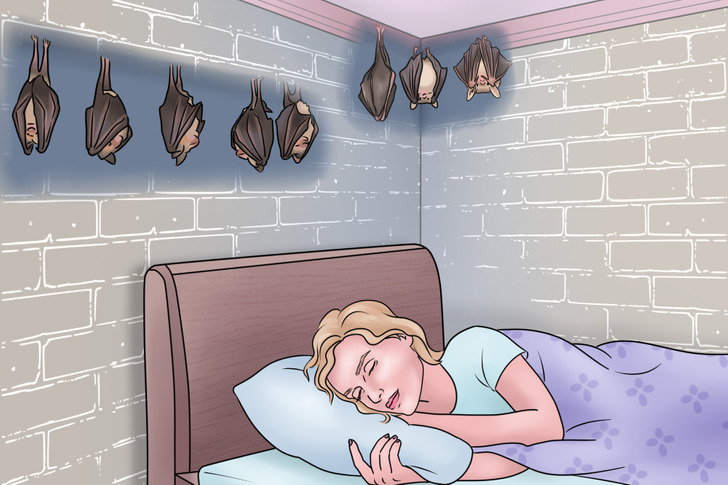
Bats are nocturnal creatures, spending their nights actively outside and resting during the day. If you happen to hear them in your walls, it’s likely to be just before dusk as they prepare to venture out for their nightly activities. However, unless you have a significant infestation, you might not notice any noise, as a small number of bats usually won’t generate much sound. While bats are often attracted to cool, dark spaces like attics, they can also find their way into the walls of your home.
To deter bats, you can try illuminating potential resting spots with bright lights, as they are naturally averse to light and will avoid it when possible. However, if bats have already established themselves in your walls, this method may not be effective. In such cases, it’s advisable to seek professional assistance to handle the situation safely and efficiently. Be prepared that professionals might need to cut open sections of your wall to fully remove the bat infestation and prevent them from returning.
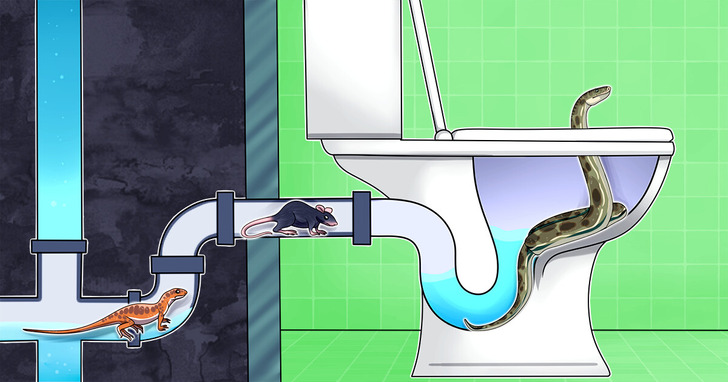
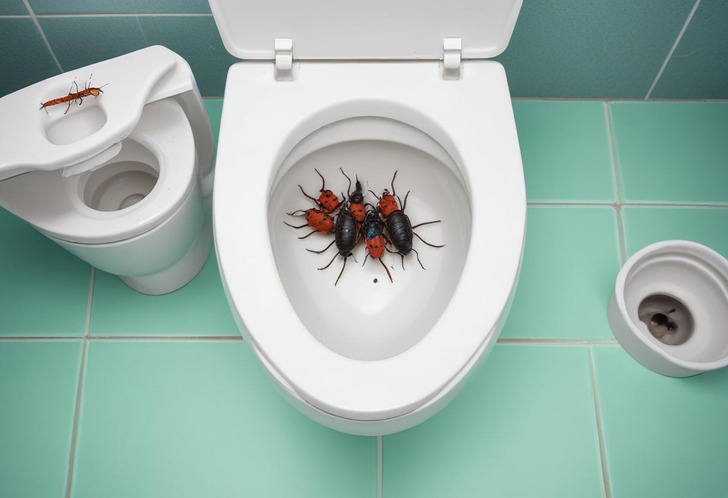
On the topic of hygiene, be sure to check out our other article where we share transformative showering tips that can revolutionize your daily routine. From techniques to products, these insights will help you maximize your shower time and leave you feeling refreshed and revitalized every day.











